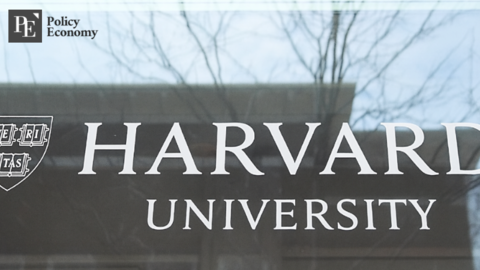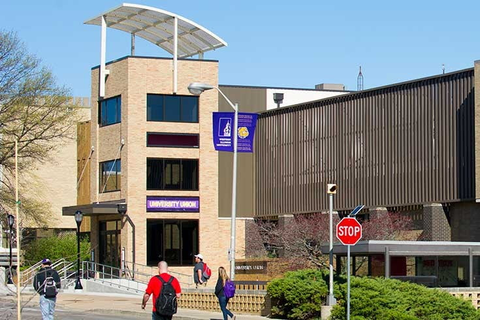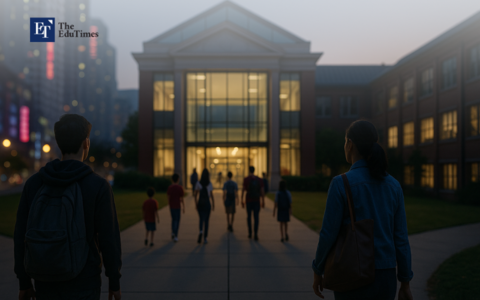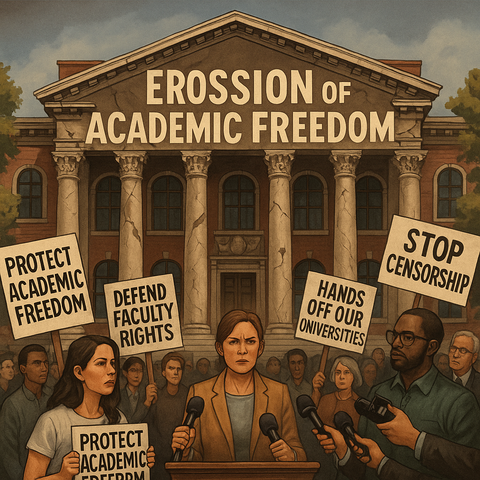Inside America's Growing Teacher Exodus
Input
Modified
A National Emergency, One Classroom at a Time Abandonment from Above: How Federal Cuts Deepened the Crisis Rebuilding the Profession: Local Solutions and a Call for Cultural Change

A National Emergency, One Classroom at a Time
The final day of school should be a time for celebration. However, for Ms. Ramirez, it was akin to mourning. She stacked the final documents on her desk, erased the board one final time, and gazed out at the empty rows of chairs that had once housed thirty sixth-graders—children who had served as a daily reminder of the reason she had become a teacher. She did not inform her pupils that she would not be returning. She was unaware of the process.
Ms. Ramirez is one of thousands. Each week, an additional educator concludes their instructional duties. The hashtag #FormerTeacher is a constant trend on LinkedIn, representing digital farewells to a profession that many individuals adored but were unable to sustain. Some individuals secure employment in the technology or real estate sectors. Some individuals silently dissipate, their exhaustion surpassing comprehension. It is not that they desired to depart. The reason is that it became impossible to remain.
It is challenging to disregard the narrative that the figures convey. Nearly three-quarters of the institutions in the United States are currently experiencing teacher shortages, according to recent research. Some rural districts have reduced the education week to four days due to the severity of the issue. In urban schools that are underfunded, administrators are compelled to fill math and science classrooms with long-term substitutes or instructors who lack subject-specific training. In numerous high-poverty institutions, the curriculum has been entirely reduced.
The shortages are most severe in the areas that require the most skilled teachers, including bilingual education, STEM, special education, career and technical disciplines, and school counseling. 98% of school districts report difficulty staffing positions in special education alone. Some educational institutions have discontinued the provision of advanced placement courses in science and mathematics. This is not due to a lack of interest among students, but rather to a shortage of instructors.
This collapse is not limited to a single region. The reports are uniform: classrooms are going dark from New Mexico to Michigan, from Mississippi to Maine. Even the most affluent suburban districts are experiencing the burden of competing for a dwindling pool of certified educators. It is no longer a regional concern; it is a national emergency.
In the interim, the educators who are still in place are being overextended. In Arkansas, a single educator is currently responsible for the supervision of a hybrid English and history course that is taught in a single classroom and is attended by students from three distinct grade levels. In Georgia, a high school counselor is responsible for a caseload of 600 pupils, which is more than double the national recommendation. In certain regions of California, districts are providing signing bonuses to substitute teachers who are willing to remain for the duration of the semester, in addition to instructors.
Burnout is a genuine issue that is escalating. According to a recent survey conducted by RAND, the stress levels of teachers are now comparable to those of healthcare professionals, with more than half of them reporting that their work-life balance is "poor" or "very poor." However, rather than addressing the structural issues—such as stagnant pay, large class sizes, and a lack of support—teachers are being asked to assume even more responsibility.
Nevertheless, society continues to portray instruction as a noble act. "Do it for the children," they advise. However, what message is conveyed to children when the individuals who care for and mentor them are consistently undervalued, fatigued, and departing?
The federal government withdrew from the conflict as schools began to contend with escalating shortages. In a controversial decision last year, the Department of Education of the Trump administration withdrew funding from three significant teacher preparation programs: the Teacher Quality Partnership (TQP), the Supporting Effective Educator Development (SEED) Grant Program, and the School Leader Incentive Program.
Combined, these programs accounted for more than $200 million in federal funding, which was used to support leadership development, place teachers in high-need areas, finance residencies, and train new educators.
The effect was immediate. The Innovation Project, a North Carolina initiative, had been utilizing federal grants to provide training to new education leaders in rural districts. Teachers consented to return home and serve as principals in exchange for mentorship and scholarships. The initiative is currently in a state of suspension. In Maryland, California, and beyond, comparable narratives were generated. Programs that necessitated years to construct were dismantled within weeks.
Soon thereafter, legal complications emerged. The Department of Education was sued by seven states, as well as organizations such as the American Association of Colleges for Teacher Education and the National Center for Teacher Residencies, on the grounds that the cuts were in violation of administrative law and congressional intent. The disputes are currently ongoing; however, the harm has already been inflicted.
Additionally, the action conveyed a disturbing message: that the federal government was prioritizing austerity over investment in the context of a mounting crisis. The expectation was that instructors, who were already overworked and underpaid, would be able to resolve the issue without assistance.

Abandonment from Above: How Federal Cuts Deepened the Crisis
At the same time, the profession is experiencing a decline in the number of individuals who are pursuing it. Over the past decade, there has been a greater than 30% decrease in the number of students enrolled in teacher preparation programs. Students perceive their educators as politicized, disrespected, and overburdened. Numerous individuals inquire as to why they would desire such a lifestyle.
Even those who persevere frequently discover that they must depart within five years. Until exhaustion or bureaucracy force them out, a profession that was once considered a lifelong vocation now appears to be a temporary halt.
However, this is not the only option. There are glimpses of optimism in communities and districts throughout the nation, as they are not merely managing the crisis but also reimagining the profession. District leaders in Tulsa, Oklahoma, initiated the employment process earlier in the year, establishing partnerships with local universities and simplifying alternative certification routes. They concentrated not only on recruitment but also on retention, which included burden adjustments, teacher voice initiatives, and mentorship programs. The outcome? Tulsa is one of the few urban districts in the state that is entirely staffed.
A new Registered Apprenticeship Program for K–12 Teachers in Massachusetts enables aspiring educators to earn while they learn. It is based on medical residencies and eliminates a substantial financial obstacle, particularly for career switchers and working adults. The Grow Your Own initiative in Tennessee has established a pipeline that provides paid training, mentorship, and long-term employment security from high school to licensure. What is their retention rate? A remarkable 75% over a five-year period, in contrast to the national average of just under 50%. Additionally, there are success stories in housing support (such as California's subsidized teacher apartments), salary increases (Newark, NJ now begins teachers at $67,000), and career ladders that enable educators to advance within the classroom rather than having to abandon it for administration.

Rebuilding the Profession: Local Solutions and a Call for Cultural Change
However, these are the exceptions. The teaching profession remains in a state of instability in the absence of a nationwide transformation in both policy and mindset. The most significant change that may be necessary is not logistical. It is cultural.
It is imperative that we cease treating educators as martyrs. We must deny the notion that they should forgo their health, finances, or identity in order to remain in classrooms. We must not only enable them to teach but also to lead in the areas of curriculum design, school policy, and education reform. The individuals who experience education on a daily basis are the most qualified to address its shortcomings.
Consequently, we return to the now-empty classroom. Ms. Ramirez was reluctant to depart. She had concepts for mentoring new teachers in her district, inclusive literature courses, and project-based learning, and she had additional contributions to make.
However, she was not without constraints. What occurs when we continue to press individuals beyond their capacities? What happens when the lights are turned off in classroom after classroom, not because students have departed, but because there is no longer a teacher to instruct them? We are rapidly approaching that inquiry. The response will not only determine the destiny of schools, but also the future of our society.
Next year is not the appropriate time to take action. It will not occur after the subsequent election. It’s now, for there is no education without instructors. And there is no future in the absence of education.





















